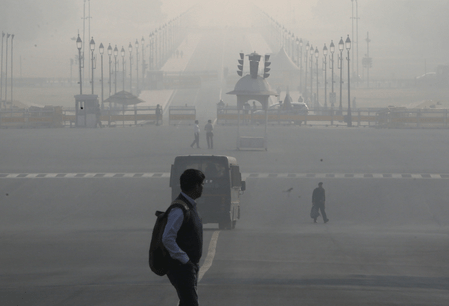New Delhi, Nov 25 — At a time when Delhi has been battling hazardous pollution levels for over a month, experts warn that volcanic ash drifting from Ethiopia could further deteriorate the national capital’s air quality, posing heightened health risks. Delhi-NCR’s air quality on Tuesday remained in the ‘very poor’ category, with a dense haze blanketing large parts of the region, according to the Central Pollution Control Board.
The situation has been aggravated by the eruption of the Hayli Gubbi volcano in Ethiopia’s Afar region—its first in thousands of years. The eruption released a massive ash plume rising 10–15 km into the atmosphere. Initially drifting toward Yemen and Oman, the ash has now travelled at high altitudes toward India, moving at speeds of 100–120 km/h.
The plume reached Delhi before passing over Gujarat, Rajasthan, Maharashtra, Punjab, and Haryana. According to the India Meteorological Department (IMD), the ash cloud is expected to exit India by 7:30 pm on Tuesday and head toward China.
Health experts warn that the ash could further compromise Delhi’s air quality. “Volcanic ash from Ethiopia may introduce additional fine particles and toxic metals into the air,” said Dr. Abhishek Shankar, Assistant Professor of Radiation Oncology at AIIMS Delhi. “These ultrafine particles can lodge deep within the lungs, aggravating respiratory issues, triggering asthma, and increasing vulnerability among children, the elderly, and cancer patients.”
Delhi residents are already reporting symptoms such as watery eyes, itching, throat irritation, and breathing discomfort. Prolonged exposure, experts caution, can lead to chronic coughing, chest tightness, wheezing, and severe respiratory complications.
“Air pollution affects every organ of the body,” noted Dr. Anant Mohan, Head of Pulmonary Medicine at AIIMS Delhi. “From the lungs to the heart and even the brain, no system is spared. This should be treated as a public health emergency.”
Experts also highlighted the rising link between pollution and cancer, especially lung cancer among non-smokers, driven by prolonged exposure to PM2.5 and other toxic pollutants.


















